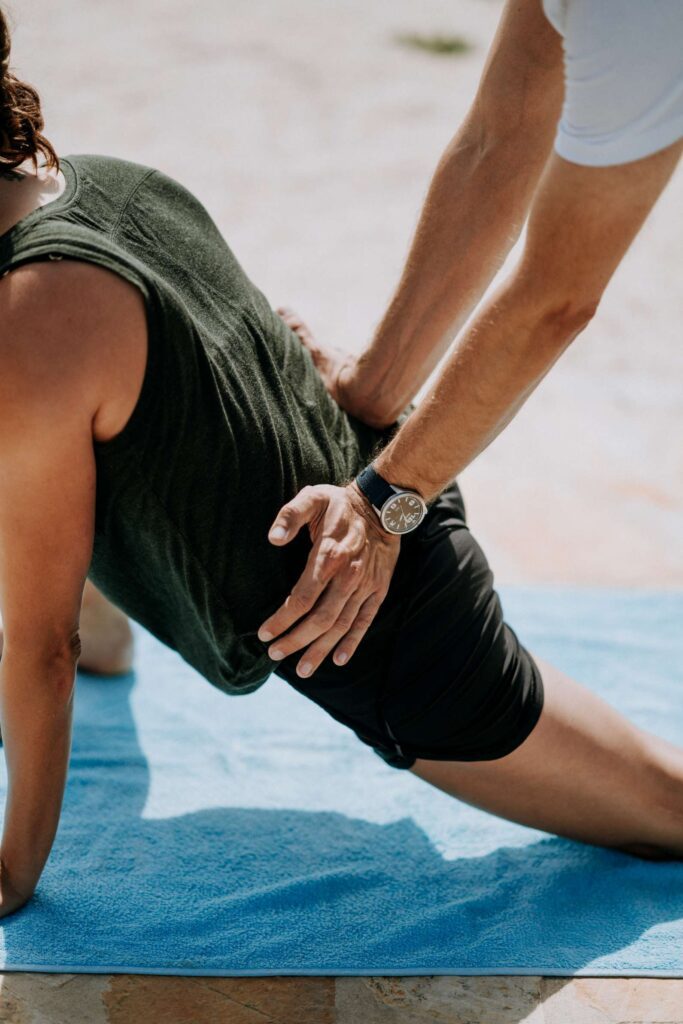Can You Wear A Posture Brace To Bed: The Health Risks
If you suffer from bad posture and a posture brace is a part of your treatment plan, you’re may be wondering if you can wear your brace while you get some z’s in.
So, can you wear a posture brace to bed?
While you can wear a posture brace to bed, it may not be the most effective or safe way to keep your spine in alignment while you sleep. In fact, there are some health risks associated with sleeping in your posture brace.
In this guide, we look at the health risks associated with wearing a posture brace to bed and provide tips on improving your posture without using a brace.
What is a Back Posture Corrector, and How Does It Work?
Most of us can probably recall a time where a teacher or parent told us to ‘sit up straight’ or ‘correct our posture’. While we may have rolled our eyes in an adolescent huff, they weren’t simply nagging for nagging sake.
Bad posture can cause a whole range of health issues, from headaches and joint stiffness to neck pain, pinched nerves and reduced mobility.
We’ve seen different tricks and tools emerging to assist with posture correction for some time now.
A quick Google search will provide you with a wide array of products, from simple shoulder braces to postural correction reminders on our phones.
One of the longest-standing postural correction tools is the posture brace.
A posture brace is a device that is designed to help improve your posture. It is typically made from a hard plastic or metal frame which sits around your back and shoulders and includes straps that go over your head and around your waist.
There’s a popular misconception that posture braces force your spine into a good postural position.
However, the brace simply provides feedback and assists in self-correction. Its primary role is to help remind you to adopt the correct postural position.
The brace works by pulling your shoulders back and up, which helps to straighten your spine.
A posture brace can also help to lessen the strain on your muscles and joints.
The Benefits of Using a Back Posture Brace
Wearing a posture brace can help to alleviate pain and improve your posture.
By gently pulling your shoulders back and aligning your spine, the brace relieved pressure on overworked joints and re-engages underworked muscles. It also prevents you from slouching or hunching over.
The posture brace can also help prevent future pain by retraining your muscles to maintain proper alignment.
Wearing the brace for just a few hours each day can make a noticeable difference in your posture.
Over time, a posture brace can help you achieve better alignment and reduce your risk of developing chronic pain.
Can You Wear a Posture Brace to Bed?
You can wear a posture brace to bed. Wearing the brace to bed an help you maintain a better posture while you sleep and ensure you wake up with better posture and reduced pain.
However, there are also a number of risks associated with sleeping in a posture brace.
You need to take care in choosing the right size of posture brace, as well as the right mattress and the right pillow.
These factors are critical, as choosing a poorly fitted posture brace can put pressure and friction on your shoulders and back while sleeping.
Sleeping with the wrong pillow and mattress can exacerbate these issues and cause back pain.
There are some risks associated with wearing a posture brace to bed.
Firstly, a posture brace restricts your movement, which means you may wake up feeling stiff and sore. A posture brace is designed to keep your spine in alignment while you sleep, but it can also prevent you from rolling over or changing positions. This can lead to an uncomfortable sleep and may result in pain the next morning.
Furthermore, if the brace is too tight, it can cause your muscles to weaken over time. Some experts recommend wearing a posture brace for only a certain number of hours a day. Taking breaks from wearing a brace is essential to prevent muscle weakness, and overnight is a good time to take this break.
Finally, wearing a posture brace to bed can interfere with your sleep, which can have a negative impact on your overall health. The pressure of the brace can cause discomfort, and the straps may rub against your skin. If you experience these problems, you may want to consider removing the brace before going to bed.
So, while a posture brace can help improve your posture, it’s important to be aware of the potential risks before you wear one to bed.
How to Maintain Good Posture When Sleeping
So, you’re working hard to maintain good posture during the day. Unfortunately, poor posture while sleeping can interfere with your progress, despite all this hard work during the day.
You can maintain good posture while sleeping without having to put up with discomfort and restriction from a posture brace.
Let us look at various sleep positions and how they affect your posture and overall health.
Stomach Sleeping
Stomach sleeping is considered the most harmful sleeping position as it can cause issues for your back, spine, and your internal organs.
Sleeping on your tummy flattens the spine instead of following its natural curvature. This upsets the balance of your spine and hinders its ability to support the body’s weight.
Given your head is twisted to the one side, this position is also harmful for your neck muscles and breath.
Side Sleeping
Many experts believe side sleeping to be the best resting position for the internal organs.
However, when it comes to posture, it is not necessarily the best option. Although side sleeping doesn’t put as much strain on the spine as sleeping on your stomach, it can still have adverse effects on the neck and shoulders.
This is because your alignment from your shoulders to your hips becomes imbalanced.
Sleeping on the side with a pillow between your legs can help to correct the alignment of the spine.

Sleeping on Your Back
This is the best sleeping position for your posture, as it allows you to keep your back straight while enabling your mattress to do its job in supporting the spine’s natural curvature.
Back sleeping also soothes the spine, especially when you’re using the right pillow to keep your neck in a good position.
In addition, the proper cushion support on the neck improves blood flow, which causes your body to relax and have a restful sleep.
Alternatives to Wearing a Posture Brace to Bed
If you’re concerned about poor posture, you may be wondering if wearing a posture brace to bed is a good idea.
Unfortunately, there is no clear consensus on whether or not posture braces are effective, and some experts even caution against their use.
However, several alternatives can help you improve your posture and reduce pain. One simple and effective option is to invest in a supportive mattress. A firm mattress can help keep your spine aligned while you sleep and reduce pressure points that can cause pain.
Another option is to practice good sleeping habits. For instance, try sleeping on your back instead of your stomach or side, and use pillows to support your head and neck.
Finally, regular exercise can also be helpful. For example, strengthening your back and shoulder muscles can help improve your posture and reduce pain.
Therefore, there are several other options to consider if you’re looking for ways to improve your posture.
Final Thoughts
A posture brace can help improve your posture by supporting your back. It works by restricting movement in certain areas of your body, encouraging you to maintain good posture. The benefits of using a posture brace are that it can help correct bad posture habits, relieve pain, and improve breathing.
However, some health risks are associated with wearing a posture brace to bed. If you want to improve your posture without using a posture brace, there are a number of alternatives you can consider.
Looking for advice? You can visit our expert chiropractors at MyChiro for a comprehensive evaluation of your posture and a personalised treatment plan.
We also have well-qualified pediatric chiropractors, gonstead chiropractors, pregnancy chiropractors, sports chiropractors, and specialists in chiropractic adjustment, chiropractic manipulation, chiropractic technique, chiropractic therapy, chiropractic treatment, etc.




